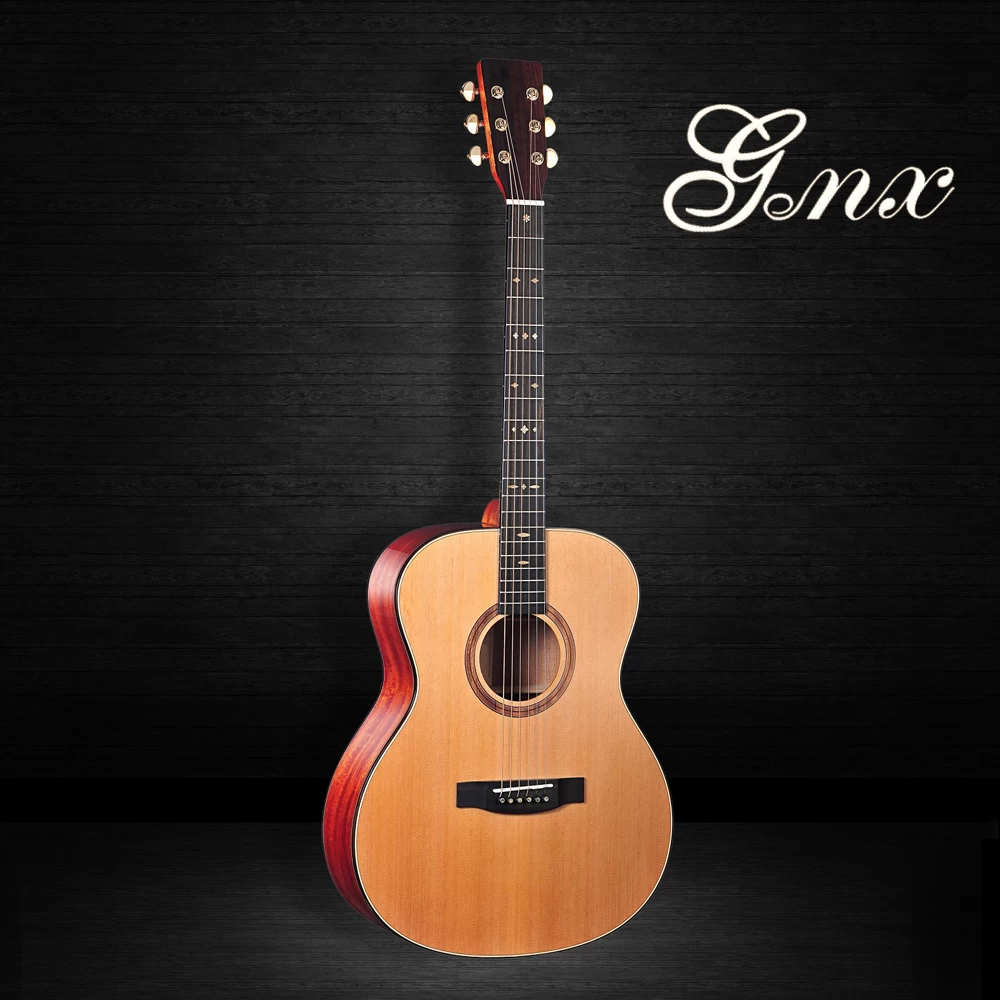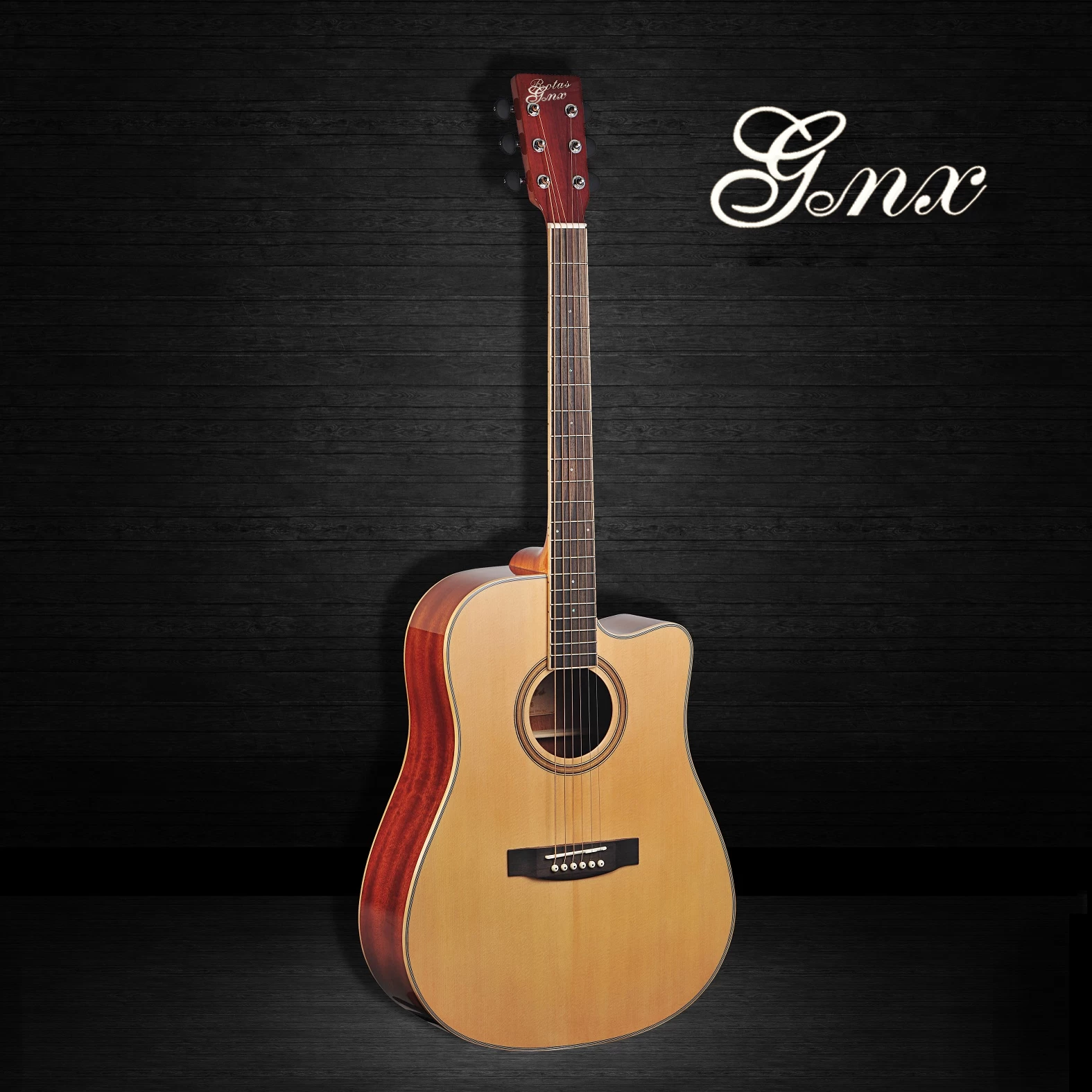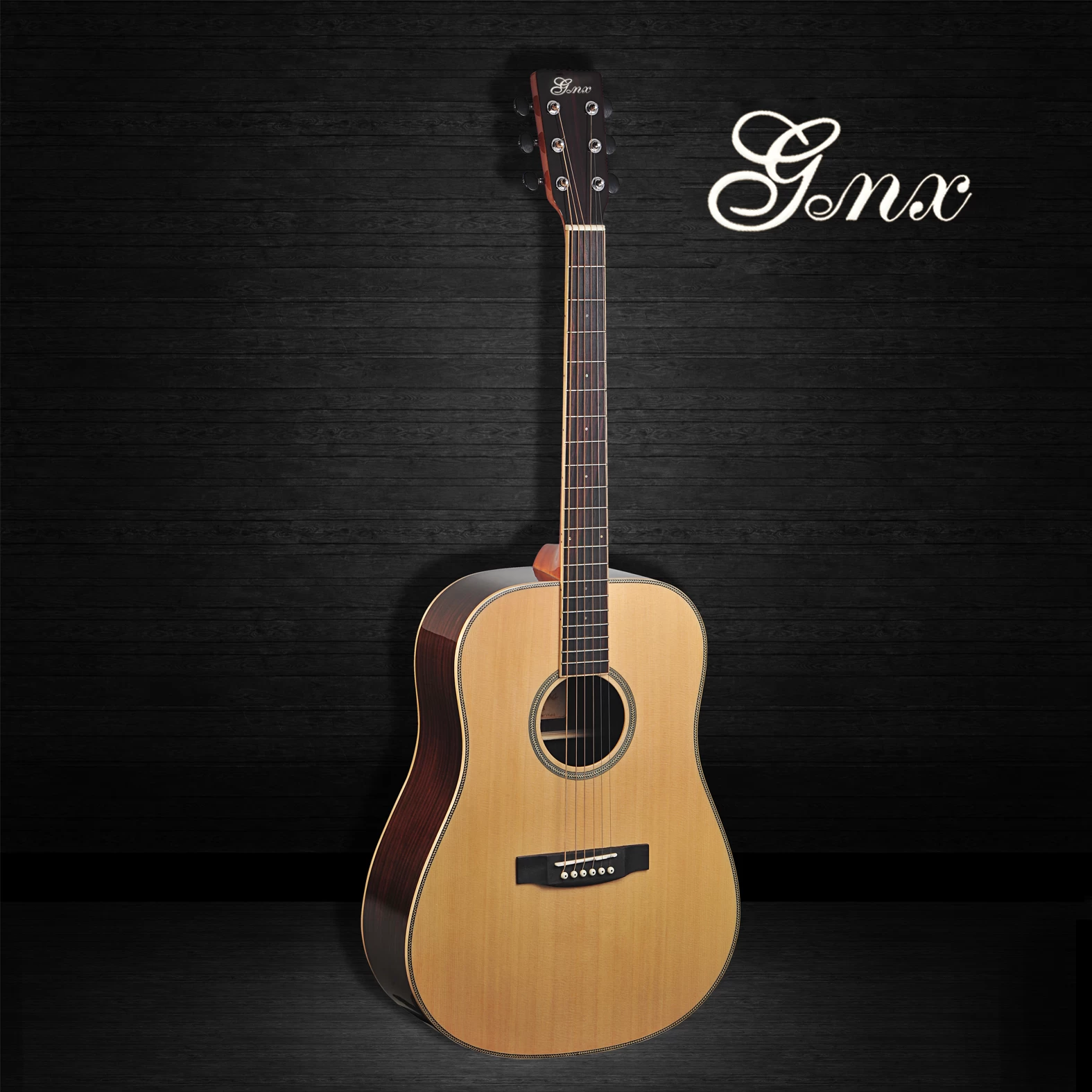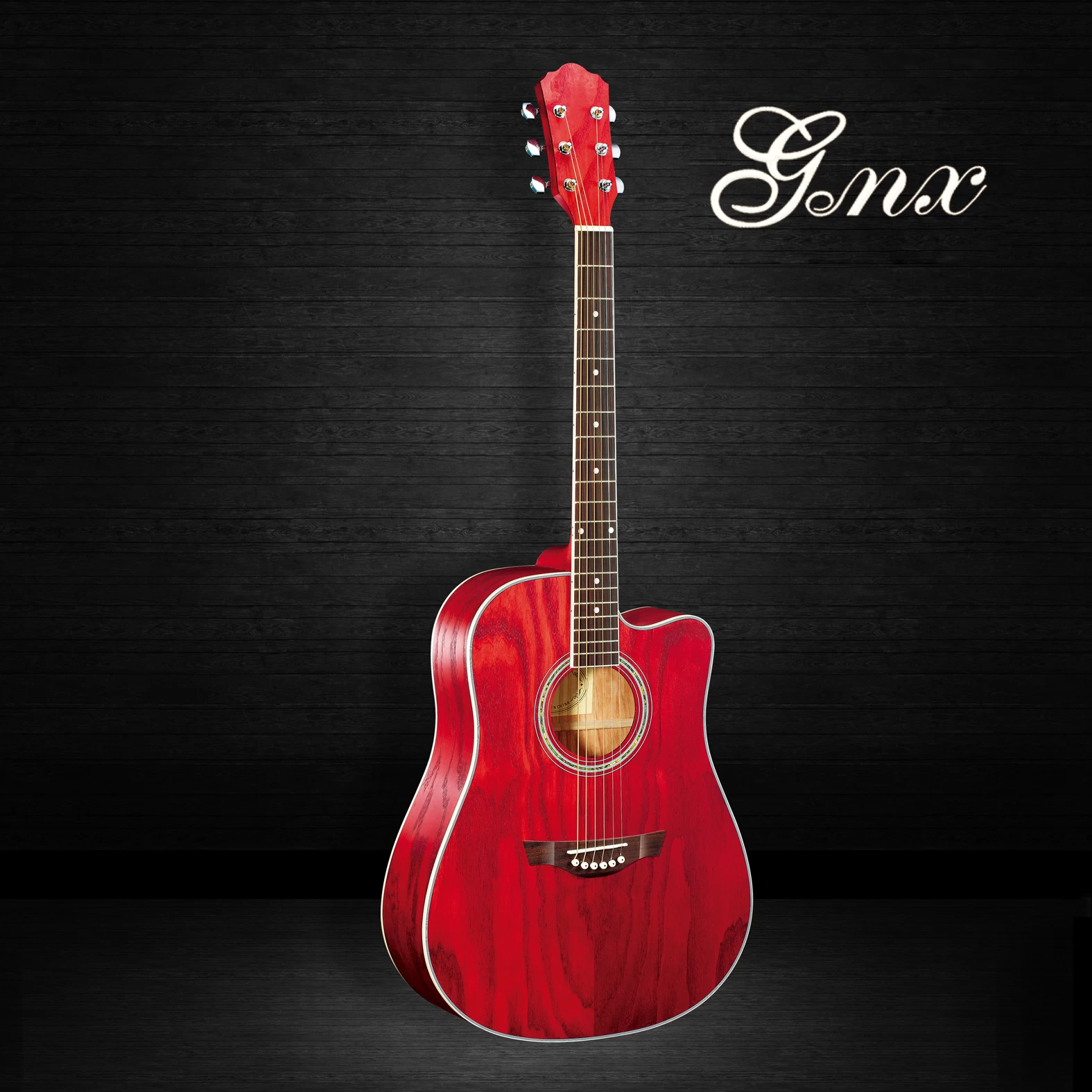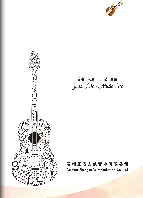Basic Guitar Vocabulary Guide for Beginners
2018-05-21 16:47:44
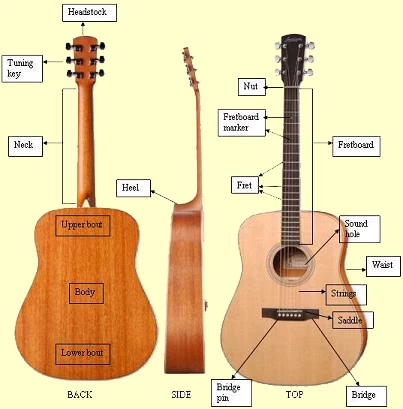
This guide is intended to help beginners learn and understand basic guitar terminology. Think of it as a dictionary that will explain the language used by guitarists. It can be pretty confusing when you are first starting out, and you hear veteran players using a bunch of words you don’t understand. You don’t want to embarrass yourself and say something stupid, but you do need to be part of the conversation, or at least know what’s going on. If you can master the vocabulary words in this article you’ll be on your way.
Please note that these are very simple terms and definitions intended for beginners. In fact, if you’ve been studying or researching guitar for a little while you may know some of them already.
As you advance as a player you will encounter more complex language, especially when it comes to music theory and playing techniques. This a primer to get you started, and once you get the basics down you can expand your vocabulary. Then, you can be the one confusing the newbies!
I’ve arranged this into three sections, which ought to make it a little easier to digest:
Guitar anatomy and parts of the electric and acoustic guitar.
Basic guitar gear definitions.
Musical terms.
Knowing the words used to describe the parts of your guitar, the gear you use and the music you play will help you communicate more effectively with other musicians. It will also help you better understand guitar specs, and sort things out when you are trying to decide if one guitar is better than another.
Let’s get to it, so you can start feeling smarter when you’re hanging around the music store.
1. Guitar Anatomy and Parts of the Guitar
Body: The guitar body is the main part of the guitar. Everything else connects here, notably the neck and bridge. For electric guitars, the pickups are mounted in or on the body, and there is a cavity within that contains the guitar’s electronics. The guitar body is often described in terms of top, back and/or sides, and each part can be made of a different wood, or all the same wood.
Bridge: The bridge serves as a contact point between the strings and the guitar body. There are many kinds of bridges for many different kinds of guitars. The bridge usually incorporates saddles for adjusting the string height (see below), and may or may not serve as the anchor point of the strings. Another apparatus called a tailpiece may hold the strings in place.
Pickup: Pickups are essentially magnets wrapped in wire. They create a magnetic field beneath the guitar strings, and when the strings vibrate the pickups transfer the electronic signal to the guitar amplifier, which in turn transfers it to the speaker. There are two main types of guitar pickups. Single-coil pickups consist of one magnet or group of magnets. Humbuckers, or double-coil pickups, consists of a pair of magnets or groups of magnets.
Neck: This is the long, slender part of the guitar between the body and the headstock. The fretboard is mounted on the playing side of the neck, or, as with the case of some Fender guitars, may be part of the neck.
Volume/Tone Knobs: The volume knob controls the strength of the output signal from the guitar to the amp. Tone knobs typically cut the amount of the treble frequencies in your sound. Most guitars have at least one volume knob, and some have one for each pickup. A guitar may have several tone knobs, or none.
Parts of the electric guitar
Parts of the electric guitar
Fretboard: The fretboard, also known as the fingerboard, is the area on the guitar where you push down on the strings to play the notes. Fretboards are made of wood and the frets themselves are embedded right into the fretboard.
Fret: The frets are those metal strips across the fretboard of your guitar. When you press the string down behind one it effectively shortens the string, causing it to change pitch.
Headstock: At the opposite end of the guitar from the bridge is the headstock. This is where the guitar strings are anchored, and usually tuned.
Nut: Located at the intersection between the neck and the headstock, the purpose of the nut is to hold the strings in place and provide a break before the tuning pegs. This helps with sustain and plays a major role in sound and tuning stability.
Tuning Pegs: Also called tuning keys or tuners, these are mounted on the headstock and used to tune your guitar. The guitar string inserts into the tuner, and twisting the tuner tightens or loosens the string, thus changing its pitch.
Pickup Selector: A switch that turns a guitar's pickups on and off in different combinations. Pickups selector switches are usually 3-position, as on the Les Paul above, or 5-position as on a Fender Stratocaster.
Parts of guitar headstock assembly
Parts of guitar headstock assembly
Pickguard: Intended to protect the wooden top of a guitar from pick scratches, these are found on both electric and acoustic guitars. Most acoustic guitars have pickguards, but many electric guitars do not. On guitars such as Stratocasters the pickguard makes up a large and integral section of the top of the guitar.
Saddle: The saddle, usually mounted atop the bridge, can be adjusted to raise or lower the string height. On an acoustic guitar the saddle is typically a single piece you may or may not be able to adjust yourself, depending on design. Electric guitars bridges usually have multiple saddles that can be adjusted with a screwdriver or Allen wrench.
Soundboard: The soundboard is the top of an acoustic guitar. The bridge transfers the vibrations from plucking a string to the soundboard, which in turn resonates. The construction and tonewoods used for the top of the guitar have a big influence on sound, tone and projection.
Sound chamber: The hollow cavity inside an acoustic guitar. The vibration from the soundboard is amplified here. The bigger the guitar body, the bigger the sound.
Sound hole: It's the hole in your acoustic guitar. All of that vibrating, from the strings to the soundboard to the sound chamber causes pressure within the sound chamber itself. A sound hole, or f-hole in the case of some instruments, serves to help equalize the pressure within the guitar and without.
Bridge pins: Used to hold the strings in place at the bridge on acoustic guitars. There is one pin for each string, and they are typically small, plastic pieces which need to be removed in order to change the strings.
Parts of the acoustic guitar
Parts of the acoustic guitar
2. Basic Guitar Gear Definitions
Acoustic-Electric Guitar: An acoustic guitar can be played without plugging it in, but you need an amp for an electric guitar. So what’s the deal with an acoustic-electric guitar? Quite simply, they are just like acoustic guitars, with the addition of electronics so you can also plug them into an amp. You can play an acoustic-electric guitar by itself, just like an acoustic guitar, or you can plug it into an amplification source.
Action: The word action describes the physical relationship between the guitar strings and fretboard. Therefore, the term “raise the action” would mean to adjust the guitar so the strings are further from the fretboard. “Lower the action” means to drop the strings lower. A guitar with “fast action” is usually one with lowered strings, which can be played very smoothly.
Amplifier: It’s that box you plug your electric guitar into to make it louder. A guitar amplifier takes the electrical signal transmitted from guitar and transfers it to a speaker, which may or may not be in the same physical chassis or “cabinet” as the amp itself. As we’ll see later in this article there are several kinds of guitar amps, but they all basically serve the same purpose.
Cable: Simply the cord you use to connect your guitar to your amp. However, there are many other uses for guitar cables, such as connecting effects pedals, or connecting an amp to a speaker cabinet. For most connections you’ll use a shielded cable, which helps to block outside electrical interference. For some connections, such as between the amp and speaker cabinet, you’ll need to use an unshielded cable.
Combo Amp: Many guitar amplifiers feature a power section and speaker in one box, as opposed to a separate amplifier and speaker cabinet. These all-in-one units are referred to as combo amps.
Effects: Guitar effects change the sound of the instrument. They are notably applied to electric guitar, but can be used on acoustic guitar as well. Distortion and overdrive are the most common effects, which literally “distort” the signal of the guitar, giving you that buzzy sound you often hear in popular music. Other popular effects include chorus, phaser, reverb, wah and delay. Effects can come in the form of individual analog pedals (or stomp boxes), multi-effect digital processors or onboard the amp.
Overdrive and distortion pedals are a popular way to alter a guitar's sound.
Overdrive and distortion pedals are a popular way to alter a guitar's sound.
Hollow-Body Guitar: When we use the term hollow-body guitar we are usually referring to an electric guitar with a hollow body, similar in build to an acoustic guitar. It still has pickups, and typically can’t be played without an amplifier.
Jack: This is the connection port where you plug in a guitar cable. There are input jacks, where you are sending a signal into something, such as an amplifier. There are output jacks, such as where you attach the cable to your guitar and send the signal out to the amplifier.
Modeling Amplifier: A modeling amp is a kind of amplifier that uses digital technology to provide an onboard palette of many different sounds, usually intended to replicate other amps and effects. Where the typical guitar amp is only capable of a handful of tones, some modeling amps can literally give you thousands of combinations of sounds.
Plectrum: This is just another word for the guitar pick, that piece of plastic you use to pluck the strings.
Setup: One solid piece of advice for beginners is to make sure they get a professional setup for their first guitar, and then take it in for a setup at regular intervals. All this means is that a technician is going to work on it to make sure everything is functioning correctly, and make adjustments so the neck, bridge and strings are all in proper alignment. Once you become more experienced you can do this work yourself.
Semi-Hollow Body Guitar: Sort of hollow and sort of not, semi-hollow guitars are electric instruments with cavities inside to give them some of the properties of a hollow-body electric but less prone to feedback. Many are made with a solid center block and hollow “wings”.
Solid-Body Guitar: The most common type of electric guitar, solid bodies, as the name suggests, are built with a solid piece of wood, or several pieces glued together into one piece. Popular guitars like the Fender Stratocaster and Gibson Les Paul have solid bodies.
The Fender Stratocaster is one example of a solid-body electric guitar.
The Fender Stratocaster is one example of a solid-body electric guitar.
Solid-State Amplifier: These are amplifiers made with transistor technology rather than tube. At one point most electronic devices, including televisions and radios, relied on tubes. With the advent of the transistor most electronics moved away from tubes, but guitar amps are one area where there is still a debate between tube and transistor technology.
Stack: This refers to an amplifier and a one or more speaker cabinets. Usually the amp is "stacked" on top of the speaker cabinets. An amplifier on top of two speaker cabinets, each with four 12-inch speakers, is a "full stack". An amp atop a single 4x12 cabinet is a "half stack". These are two common examples, but any combination of amp and speaker cabinet can form a stack.
String Gauge: Simply put, string gauge refers to the thickness of the guitar strings. Players often refer to a set of strings by the lightest string. So, a pack of light-gauge strings where the heaviest strings is a 46 and the lightest is a 10 would be called “10s”. Be aware than string makers use all kinds of terminology to differentiate their packs of strings, so it’s always best to look at the gauge. In other words, don’t assume “light" is the same for each string manufacturer.
Tonewood: Any wood used in the construction of a guitar can be referred to as a tonewood. But, as you might expect, since guitars are made of all kinds of stuff there is a certain kind of reverence for some tonewoods, and disdain for others. Common tonewoods include maple, rosewood, mahogany, alder and spruce. Guitar companies combine them in ways intended to create a pleasing sound.
Tremolo / Vibrato / Whammy Bar: In terms of hardware, these are all words for the same thing. Usually mounted on the bridge, or incorporated into the bridge itself, this device serves to tighten or slacken the strings, thus changing their pitch. Common systems include the Fender Synchronized Tremolo, Bigsby Vibrato, and Floyd Rose Tremolo System.
Truss Rod: This is a metal rod embedded in the guitar neck. It can be adjusted at one end or the other in order to change the curve of the neck. This adjustment helps with string action and may even improve the sound of the guitar.
Tube Amplifier: Some amps use vacuum tubes, also called valves, in their design. While it is an outdated technology, some musicians believe they sound better.
Marshall is a company known for their legendary valve (tube) amplifiers.
Marshall is a company known for their legendary valve (tube) amplifiers.
3. Musical Terms
Chord: A chord is defined as three or more notes played simultaneously. Practically speaking, they are those crazy shapes you must learn to contort your hand into when you are first learning to play. Common beginner chords include open forms of A, Am, C, D, Dm, E, Em, F and G.
Lead Guitar: The term lead guitar doesn’t refer to a type of guitar, but the role of the guitar or guitar player in a band or particular piece of music. In a nutshell: lead guitar simply means the musician is playing more solos and embellishments.
Rhythm Guitar: As with the term lead guitar, this refers to the role of the guitar in a band or piece of music. Rhythm guitarists play more chords than solos, helping the bass and drums to bolster the rhythm section of the song. A guitar player may specialize in lead or rhythm, but many players do both. In bands with only one guitar player, the guitarist must do both.
Scale: A scale is a sequence of notes, arranged in a specific order. Most scales have eight notes (seven notes plus an octave), but not all. A mode is type of scale. As a beginner you won’t need to worry too much about music theory for a while, but you will eventually want to learn all of the most important scales and modes, as well as how they are derived.
Standard Tuning: There are many ways to tune a guitar, but the standard tuning is (from thickest to thinnest strings) E-A-D-G-B-E. Most guitar players use this tuning or some form of it, and most theory and song books are written with the assumption that your guitar is in standard tuning.
Tablature: Tablature or “tab” is a super easy way to be able to read music, without actually having to learn to read music. Tab consists of six lines, one for each guitar string. A number on the line indicates which fret you play on that string. Thanks to tab, beginners, and even advanced guitar players, can learn complex pieces without ever having to understand how to read music.
Expanding Your Guitar Vocabulary
So there it is. Now you know everything you need to know about the guitar.
Not quite! There is much yet to learn, and this is just the tip of the iceberg. As you advance in your playing you will encounter new terms to explain different concepts in music theory, and more precise definitions when it comes to gear and parts of the guitar. But I hope, as beginner, you'll find this guitar vocabulary guide useful reference.
If there are any other definitions you’d like to see included here let me know in the comments!





